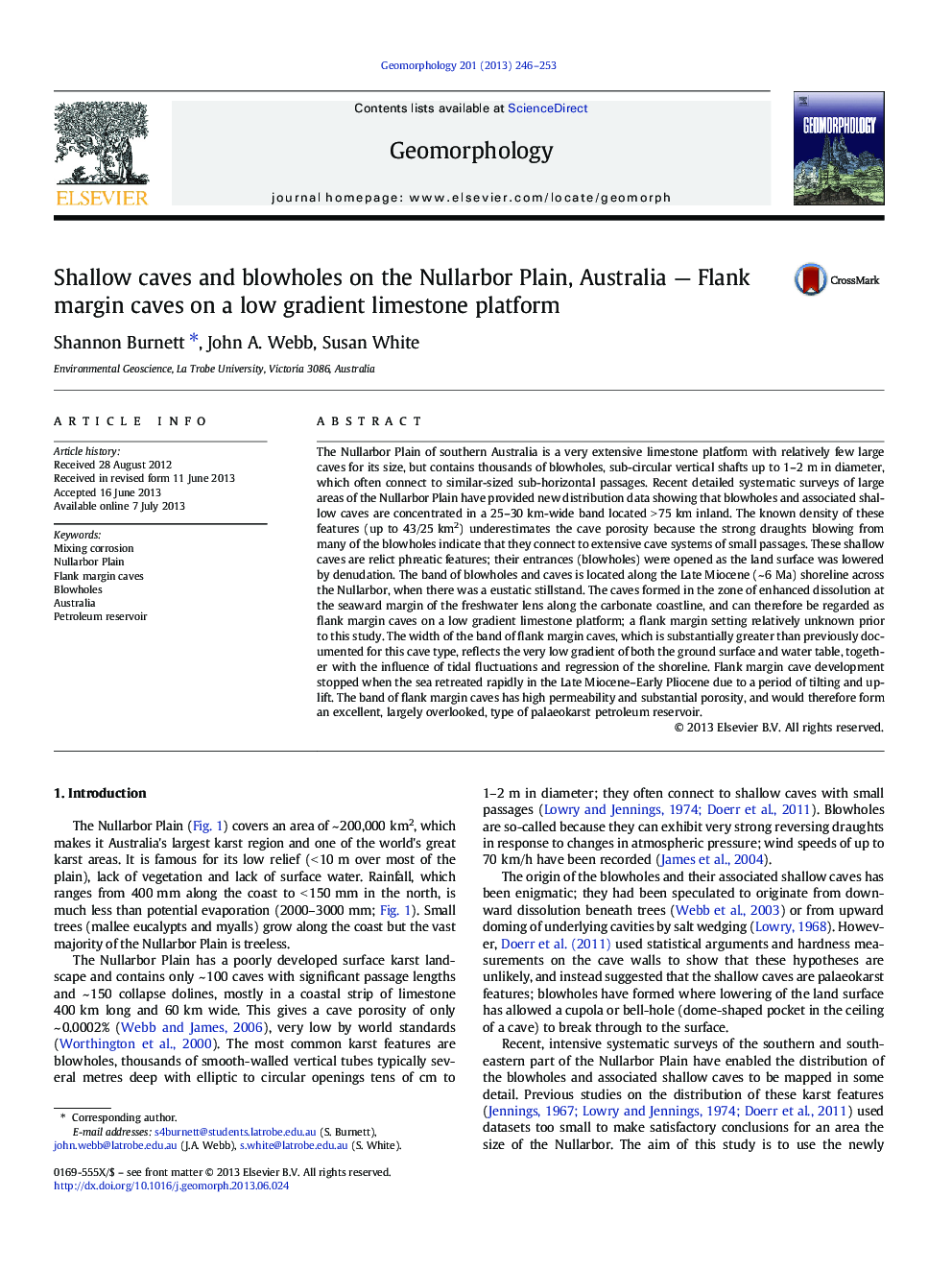| کد مقاله | کد نشریه | سال انتشار | مقاله انگلیسی | نسخه تمام متن |
|---|---|---|---|---|
| 6432658 | 1635448 | 2013 | 8 صفحه PDF | دانلود رایگان |

- Nullarbor surveys have shown a better distribution of blowholes and shallow caves.
- These features concentrate in a band located along a Late Miocene shoreline.
- These flank margin caves are associated with the seawater/freshwater interface.
- The band of caves reflects the low surface gradient and slow shoreline migration.
- This high permeability and porosity band forms an overlooked palaeokarst reservoir.
The Nullarbor Plain of southern Australia is a very extensive limestone platform with relatively few large caves for its size, but contains thousands of blowholes, sub-circular vertical shafts up to 1-2Â m in diameter, which often connect to similar-sized sub-horizontal passages. Recent detailed systematic surveys of large areas of the Nullarbor Plain have provided new distribution data showing that blowholes and associated shallow caves are concentrated in a 25-30Â km-wide band located >Â 75Â km inland. The known density of these features (up to 43/25Â km2) underestimates the cave porosity because the strong draughts blowing from many of the blowholes indicate that they connect to extensive cave systems of small passages. These shallow caves are relict phreatic features; their entrances (blowholes) were opened as the land surface was lowered by denudation. The band of blowholes and caves is located along the Late Miocene (~Â 6Â Ma) shoreline across the Nullarbor, when there was a eustatic stillstand. The caves formed in the zone of enhanced dissolution at the seaward margin of the freshwater lens along the carbonate coastline, and can therefore be regarded as flank margin caves on a low gradient limestone platform; a flank margin setting relatively unknown prior to this study. The width of the band of flank margin caves, which is substantially greater than previously documented for this cave type, reflects the very low gradient of both the ground surface and water table, together with the influence of tidal fluctuations and regression of the shoreline. Flank margin cave development stopped when the sea retreated rapidly in the Late Miocene-Early Pliocene due to a period of tilting and uplift. The band of flank margin caves has high permeability and substantial porosity, and would therefore form an excellent, largely overlooked, type of palaeokarst petroleum reservoir.
Journal: Geomorphology - Volume 201, 1 November 2013, Pages 246-253